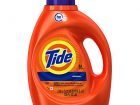Backlash Against High Fructose Corn Syrup Grows
I don’t claim to be a nutritionist, yet I prefer to eat healthy. Though, I am a foodie, in my own unique way. I love to cook, experiment with recipes and explore different cuisines. That’s why I’m writing a cookbook. It’s an exciting concept. I’m focusing on around the world with real food and real people made simple. It will blend stories and photographs from my around the world motorcycle adventure with recipes from some 35 countries. Stay tuned, more on this exciting project as it evolves.
When it comes to food and nutrition, it’s no secret I’ve got an ax to grind when it comes to high-fructose corn syrup (HFCS). Sure, when I was growing up, perhaps, sugar was evil. My mom never bought nor allowed soft drinks in our home. On the Hawaiian archipelago, farmers grew sugar cane (and pineapples). Not so much anymore.
High-fructose corn syrup has been the preferred sweetener for many years for a number of reasons. First, government subsidies on corn make it cheaper than sucrose (sugar). And second, the government imposes high tariffs on imported sugar. In Hawaii, hotels and golf courses, I imagine, have historically delivered a high return on capital than sugar cane farming. And those US territories like Puerto Rico and the Virgin Islands? I guess they can’t compete with the corn subsidies either.
Sugar tariffs aren’t new. Our young country imposed the first tariff in 1789. Over the next century and a half the tariffs were controversial and contributed to partisan debate, sugar industry lobbying and election politicking. I will avoid a historical treatise on the various farm bills, sugar taxes, tariffs and related quotas that our country endured, all in effort to protect our farmers and control sugar prices.
To refresh your understanding of HFCS, it’s the most widely used sweetener in food and beverages in the US. High-fructose corn syrup is made through a process that changes the naturally occuring sugar content in cornstarch to a form of sweetener called fructose. To break down some of the cornstarch into fructose, a number of enzymes are added to the separated cornstarch: alpha-amylase, glucoamylase and glucose-isomerase. After this enzymatic process, which results in a mix of 90% fructose and 10% glucose,which is blended with the original corn syrup to achieve the desired sweetness types: HFCS 55 (55 percent fructose and 45 percent glucose) and HFCS 42 (42 percent fructose and 58 percent glucose). HFCS 55 is the most widely used. It serves as the main sweetener for soft drinks and prepared foods.
Fact is, HFCS is processed and, as such, is in processed food. We grow a lot of corn in the United States. And there are government subsidies to help our corn farmers. This is also controversial. Seems that we go out of our way to protect our farmers, which sometimes isn’t in our best interest. Food and soft drink producers can buy HFCS cheaper than natural sugar. But HFCS is under attack and blamed for the growing obesity problem in our country. Even more, earlier this year researchers at UCLA’s Johnson Cancer center say that “cancer cells can readily metabolize fructose to increase proliferation.” The study, they say, “may help explain other studies that have linked fructose intake with pancreatic cancer, one of the deadliest cancer types.”
Though the American Beverage Association and the Corn Refiners Association have long argued sugar is sugar. The researchers at UCLA found otherwise. They grew pancreatic cancer cells in lab dishes and fed them both glucose and fructose. Tumor cells thrive on sugar but they used the fructose to proliferate. “Importantly, fructose and glucose metabolism are quite different,” the researchers wrote.
Another problem with a corn subsidies and our propensity to tax sugar is ethanol. As we strive to lessen our dependence on foreign fossil fuels and move to more green or sustainable energy sources, we must consider bio-fuels such as ethanol. There are many ways to produce ethanol, but some are just not economically feasible or environmentally friendly. Our government, led by politicians in corn growing states, fancy a possible future of ethanol produced from domestic corn.

In South America, Brazil has been extremely successful in producing ethanol from sugar cane. So much that Brazil is nearly self-sufficient when it comes to energy sources–ethanol and domestic oil drilling. In fact, Brazil could be a source of ethanol for the United States. However sugar tariffs make it too expensive—54 cents for each gallon of Brazilian ethanol imported into this country. And if the American Sugar Alliance have their way, this tariff will never go away.
One this is for sure: the sugar industry is doing better as a result of the backlash against HFCS.
I will change eating habits or go out of my way to avoid purchasing products with HFCS. So, I realized recently I had no ketchup in the fridge. It’s no wonder, I hardly eat or use ketchup, but needed some for a little cookout of hotdogs and hamburgers. As a brand loyalist to Heinz, I picked up the bottle and read the ingredients. Sure enough, the number two ingredient is high-fructose corn syrup. Disgusted, I scanned the shelf. Then it jumped out and hit me like a two-by-four on the head: Hunts Ketchup. Screaming with green type on a yellow snipe: “NO High Fructose Corn Syrup.” I picked up the bottle and tossed it into my basket.
In April of this year ConAgra Foods, the parent of Hunt’s brand products, removed HFCS from all of its ketchup products. Stating its decision was “in direct response to consumer demand.”
“The 2009 HealthFocus® Trend Report indicated consumer concern over high fructose corn syrup has risen from 27% of shoppers being extremely or very concerned in 2004 to 45% of shoppers in 2008.”

According to BevReview, 2009 was the year “we finally saw mainstream reinforcement of the sugar vs. high fructose corn syrup flavor experience.” That’s when Pepsi rolled out Pepsi Throwback and Mountain Dew Throwback–soft drinks made with real sugar.
Here in Southern California, there is almost a cult following for what is referred to as “Mexican Coke,” classic Coca-Cola made with pure cane sugar—no HFCS—even better, served in classic real glass bottles—no plastic.
Next time you’re food shopping, check out the ingredients of what’s in your basket. You may be surprised. I do know this, we’ll continue to see the big brands pulling back on HFCS, and that’s a good thing.




Great piece Allan! Have you been reading Michael Pollan’s work? Just returned from the Ansel Adams Wilderness up in the Sierras; wow! Can’t believe it’s so close to me and I have not taken the time to visit. Still hoping to test some of your recipes. Going to Toronto this week but lets plan to get together.
Shadman!! Yes. I’ve read excerpts from Omnivore but do need to read more of his stuff. I’m fascinated with his perspective. Yeah. You see. What we have in our backyard sometimes we tend to forget. Recipe testing is an order. Let’s make that happen!
I love this article! I wrote about it on my website, but it wasn’t nearly as comprehensive. If you don’t mind, I’d like to put a link from my article to yours to share our mutual hatred of HFCS. I’m sure you know that the Corn Refiners organization is in the process of trying to get the name HFCS changed to “corn sugar.” They know they’re in trouble!
Hey Irene, so nice to have you comment here and am very happy to have you put a link to it on your website, tweet it, like it in Facebook and otherwise, just get the word out. Corn Sugar would be the worse thing to happen. It’s NOT sugar. Thanks for coming by. Sorry been so long, the notification got lost in the email and just noticed today that on my admin there were comments to be admin’d!!